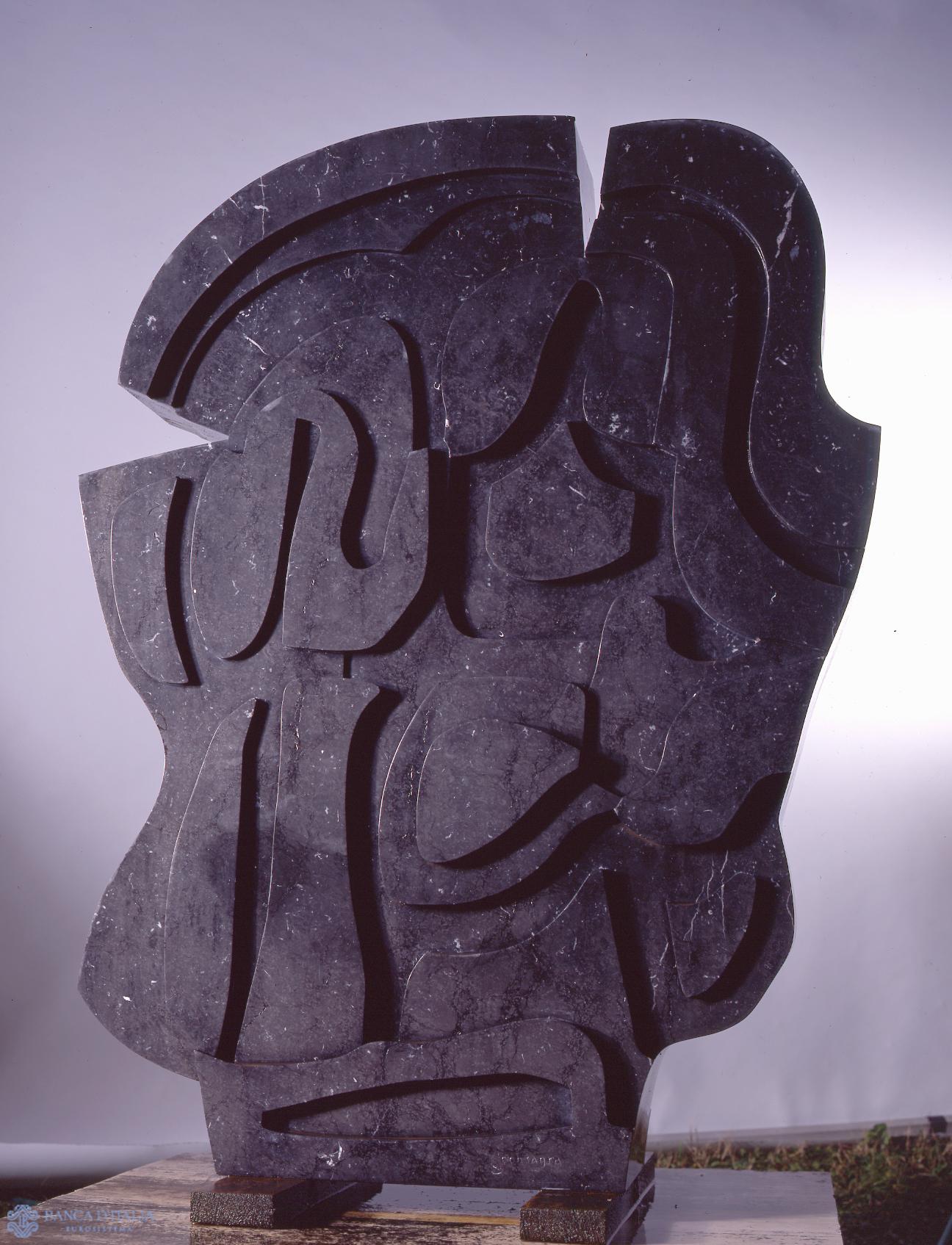Pietro Consagra was born at Mazara del Vallo (near Trapani) in 1920 and at the end of the Second World War he went to Rome where he shared a studio with Turcato, obtained from Renato Guttuso, in Via Margutta. In December 1946 he went to Paris with a study grant awarded by Lionello Venturi, and there he met many important sculptors of the time, including Brancusi, Giacometti and Laurens. In 1947 together with Accardi, Turcato, Dorazio, Perilli and Sanfilippo he founded the group of artists called Forma 1, a name derived from the group’s magazine. They declared themselves to be “Formalist and Marxist” and engaged in violent arguments in the name of Abstractism against late Picasso-influenced Cubism. In 1949 Consagra exhibited his work in Venice at the Guggenheim Foundation with Arp, Brancusi and Pevsner. In 1952 he wrote an essay on necessity in sculpture in reply to a well-known piece by Arturo Martini on sculpture being a dead language.
From his first pieces with their sharp contours to the Colloqui and Comizi, Consagra’s artistic syntax, one of the most consistent in Italian art, was steadily refined. He brought fantastic and geometric inventions to the traditional values of the bas-relief. His quest for form continued on an obstinately two-dimensional plane up until his famous Sculture frontali, which Argan defined as “screens which themselves contain the living reality of the space”. The sculptures were based on the judicious use of materials – marble, bronze, wood, iron and brass – which allowed him to achieve a refined fusion of plastic and chromatic qualities as with his Ferri trasparenti. These were works of playful lines which, like children’s toys, hover lightly in the air, with their varnished, bright colours. They are composed of huge but fine perforated sheets of metal through which the light shows through. They can also be seen as large tiled forms similar to the huge pincers of fantastic insects. In 1967 he departed for the United States where he taught at the Minneapolis School of Arts. In 1968 he published La città frontale and he experimented with the minimum thickness of bifrontal sculpture in his work entitled Sottilissime, reducing the surface thickness to two tenths of a millimetre. He returned to the United States in 1969. In the 1970s he explored the solidity of marble and produced a series of sculptures playing on the carving of precious marbles which provided a further element of refined elegance through their colouring. He had a personal exhibition room at the 36th edition of the Venice Biennale in 1972 and, at the 40th Biennale in 1982, he exhibited a single large sculpture Grande addossato. A large retrospective exhibition was put on at the Galleria Nazionale d’Arte Moderna, curated by Augusta Monferini. He died in Milan in 2005.
Pietro Consagra
Pietro Consagra (Mazara del Vallo 1920 - Milan 2005)
20th century AD




